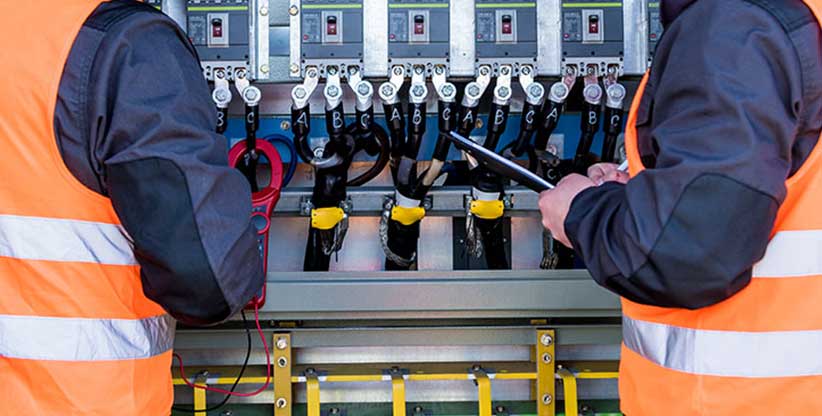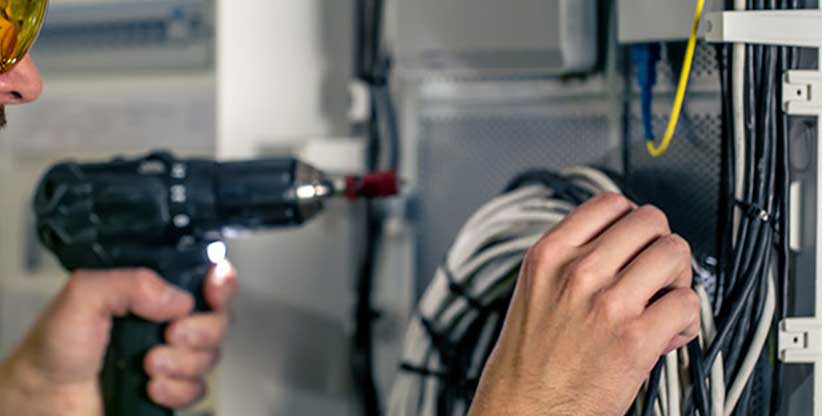Have you ever been relaxing at home when the lights suddenly cut out and the TV clicks off? You head to the breaker panel, spot one switch flipped to off, and wonder what on earth happened. A tripping breaker feels annoying and a bit scary, as nobody likes surprises when it comes to electricity.
A breaker trips to protect you from too much current. The usual causes are overload, short circuit, ground fault, arc fault, or a worn-out breaker. First, reset once. If it trips again, unplug some devices and test. Still tripping? Call a licensed electrician.
Below, we’ll break down why breakers trip, show you a simple checklist to follow, share safety tips, and point out when it’s smart to bring in a pro. By the end, you’ll feel confident every time you open that panel.
What a Circuit Breaker Actually Does
A breaker is a reusable switch that cuts power when the electrical flow becomes unsafe.
Breakers react in milliseconds, much faster than a human could shut things off. They’re a key part of modern home safety codes, such as the U.S. National Electrical Code (NEC).
When current exceeds the breaker’s rating, say, 20 amps on a 20 A breaker, it heats an internal strip or trips a magnetic catch. Power shuts off, sparing your wires from overheating and preventing fires.
Five Everyday Reasons a Breaker Trips
1. Overloaded circuit
Plugging too many high-wattage items, such as space heaters, hair dryers, and toasters, onto one line swamps the breaker.
Repeated overloads bake insulation and can start an electrical fire even if the breaker seems to keep doing its job.
2. Short circuit
A hot wire touches neutral or another hot wire, creating a shortcut back to the panel. Current spikes instantly and turn the breaker off.
3. Ground fault
A hot wire contacts a ground path, often through moisture, sending energy where it shouldn’t go. Kitchens, baths, and outdoor outlets are prone spots.
4. Arc fault
Loose or damaged conductors create tiny lightning-like arcs. They don’t always draw huge amps, but the heat from the arc can ignite wood or insulation.
5. Aging or defective breaker
Nothing lasts forever. Springs weaken, internal parts corrode, and the breaker starts tripping at lower currents or fails to hold on at all.
Troubleshooting at a Glance
| Cause | Quick Symptom | First Step |
| Overload | Trips when many devices run at once | Unplug extras, reset |
| Short circuit | Trips instantly after reset | Inspect cords for damage |
| Ground fault | Trips when moisture is present | Dry area, use a GFCI outlet |
| Arc fault | Crackling sound before the trip | Replace the loose device/cable |
| Old breaker | Random trips, handle feels loose | Call electrician |
Step-by-Step: What to Do When the Breaker Trips
Step 1. Reset safely
- Turn off or unplug major devices on that circuit.
- Find the tripped switch—it will be midway between ON and OFF.
- Push fully to OFF first, then back to ON.
Quick Tip: If you skip pushing to OFF before ON, the breaker may not latch and will flip again right away.
Step 2. Test the load
Plug devices back in one at a time. When the breaker trips again, the last item connected is likely your culprit.
Label each breaker with the rooms or outlets it controls. Future trips will be far less confusing.
Step 3. Inspect cords and outlets
Look for melted plugs, black marks, or a burnt smell. Replace damaged cords immediately.
Step 4. Dry out damp areas
Bathrooms, laundry rooms, and outdoor receptacles can trip when water sneaks in.
Ground-fault circuit interrupter (GFCI) outlets are required in wet locations because they cut power far quicker than standard breakers.
Step 5. Check connected appliances
Old refrigerators and window AC units often develop internal shorts. If the breaker stays on until that appliance starts, you’ve found the issue.
Step 6. Evaluate overall circuit demand
Add up the wattage of items on the line. Divide by 120 V (or 240 V for some appliances) to find amperage. Keep the total below 80 % of the breaker rating for daily use.
When to Call a Professional
- The breaker trips immediately every time you reset.
- You smell burning or see scorch marks.
- Multiple breakers trip at random times.
- Wiring feels hot to the touch.
Warnings: Do not bypass a breaker or hold it in the ON position. That defeats the safety design and invites fire.
A licensed electrician can use specialized meters, infrared cameras, and insulation resistance tests to locate hidden faults.
Upgrading for Better Protection
- Install GFCI and AFCI breakers
They cost more than standard units but add layers of safety against ground faults and arcing.
- Balance your circuits
During a remodel, have your electrician redistribute outlets so big-draw appliances sit on separate lines.
- Replace aging panels
Panels older than 30 years may lack space and modern safety features. Swapping to a new load center makes future expansions easier.
The U.S. Consumer Product Safety Commission offers guidance on identifying recalled or obsolete breaker brands: CPSC Electrical Safety.
Conclusion
A tripping breaker is a warning. By understanding overloads, shorts, and ground or arc faults, you can solve small problems and spot big ones before damage happens. Reset once, test your devices, and never ignore repeat trips. When in doubt, contact a professional.
Need expert help? AURA E.I. specializes in breaker inspection, panel upgrades, and safe repairs. One visit can restore peace of mind and keep your home powered safely.
FAQs
Why does my breaker trip only at night?
Some devices (like heaters or chargers) run more after dark, raising the load. Motion-sensing outdoor lights can also short when damp.
Is it safe to reset the breaker multiple times?
Two tries are fine. Beyond that, continuing to flip it risks electrical damage. Find the root cause instead.
Can a bad breaker damage appliances?
A breaker that fails to trip on time lets voltage spikes reach devices, shortening their life.
What size breaker should a kitchen have?
Modern codes call for at least two 20 A small-appliance circuits plus dedicated lines for microwave, dishwasher, and fridge.
Will a surge protector stop trips? Surge strips guard against voltage spikes, not excess current. They won’t prevent an overload or short circuit.


